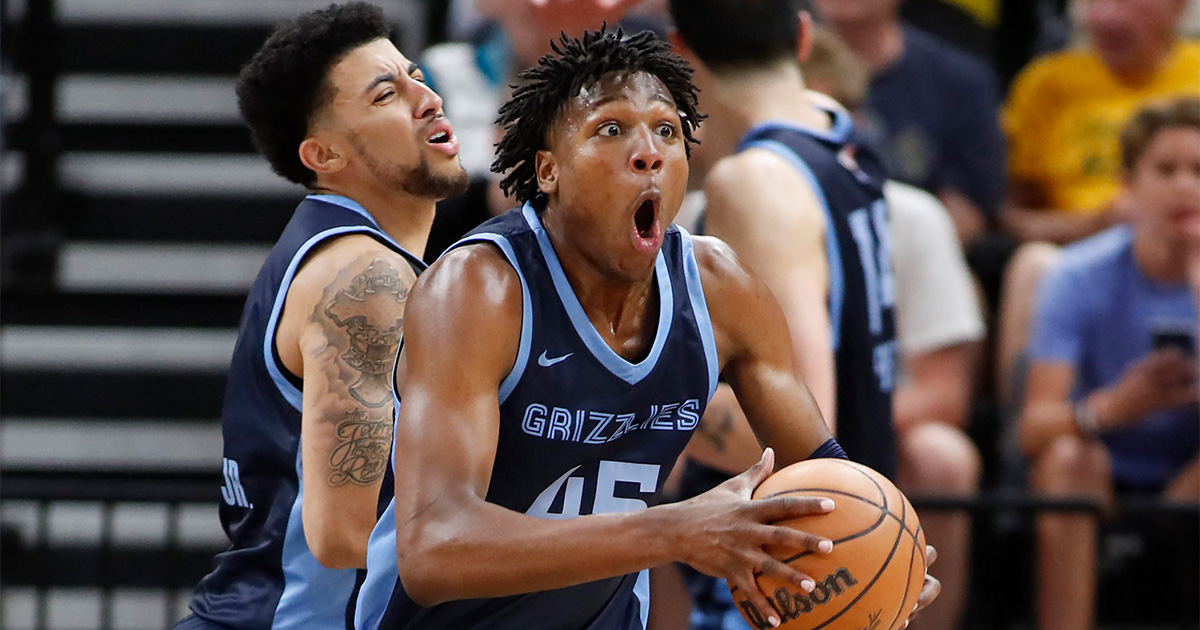The 12 members of Team USA’s roster for this year’s FIBA World Cup have finally been revealed and the group that will be sent by USA Basketball to Manila is one of the youngest in recent memory.
The team’s average age is 24.1 years which makes them the youngest collection of NBA players to be sent to a major international basketball tournament since the infamous 2004 U.S. Men’s Olympic Basketball Team that won bronze at Athens. That 2004 team had an average age of 23.5 years, though it was led by established NBA superstars Tim Duncan and Allen Iverson who were at the peak of their powers at the time.
This year’s Team USA may be young too, but their roster composition is quite different. There are no multiple-time NBA All-Stars on this roster and there are only four players who have ever made an All-Star team in Jaren Jackson Jr., Anthony Edwards, Tyrese Haliburton, and Brandon Ingram. Furthermore, Jackson, the reigning NBA Defensive Player of the Year, is the only player in this unit that has won a major individual award in the NBA.
While this team may lack star power, this group appears to be one that can actually play the kind of team-oriented basketball needed to succeed on the international stage. The collection of talent that head coach Steve Kerr and Managing Director Grant Hill have put together, at least on paper, has the right mix of shooting and passing to make things work.
Jackson, Edwards, and Haliburton figure to be a part of Team USA’s starting line-up come next month’s World Cup and they should be joined by Mikal Bridges and reigning NBA Rookie of the Year Paolo Banchero. Haliburton’s capacity to run this team’s offense, together with the ability of Jackson to stay out of foul trouble as he backstops their defense, will be among the most crucial things to look out for.
The two-way play of Edwards, Bridges, and Banchero will be key as well, particularly their capacity to step up as the go-to guys on this team even for just short stretches.
If they are unable to step up to the task at hand, Jalen Brunson, Brandon Ingram, and Austin Reaves will give Kerr a more than solid fallback. Brunson and Ingram have proven in the NBA that they can carry their teams over long stretches of games while Reaves has shown that he can be a threat regardless of whether or not he has the ball.
The case for this team to succeed lies in the all-around games that most of these aforementioned players possess. It is a given that Haliburton and Brunson will take turns running this team, yet it is the strong secondary playmaking of Edwards, Bridges, Ingram, Reaves, and even Banchero that can take them to the next level and closer to their ultimate goal of winning a gold medal.
In addition, the role players that have been included on this team are strong complementary players who should thrive when playing under international rules. Josh Hart, Cam Johnson, and Bobby Portis have enough of a mix of shooting and defense to slot into almost any line-up with this group.
On the other hand, Walker Kessler provides them with elite rim protection and rim running that ensures that there will only be a slight drop-off in their interior presence when Jackson has to sit.
Only seven weeks remain until the FIBA World Cup and although this version of Team USA may look underwhelming when compared with its predecessors, this collection of players actually addresses some of the major concerns with the previous roster building of the program.
In constructing this team, Kerr and Hill have forgone the lazy process of loading up on stars and have taken a more nuanced approach in selecting this group. Moreover, if this team succeeds, their low average age will allow for continuity moving forward for the next decade
Regardless of their ultimate result in this year’s FIBA World Cup though, this team figures to be a fun one to watch as many key pieces thrive on fast-paced play. Many of the names on this team may not yet be known to the casual fan, but a handful of them figure to become household names sooner rather than later.
















turan köy